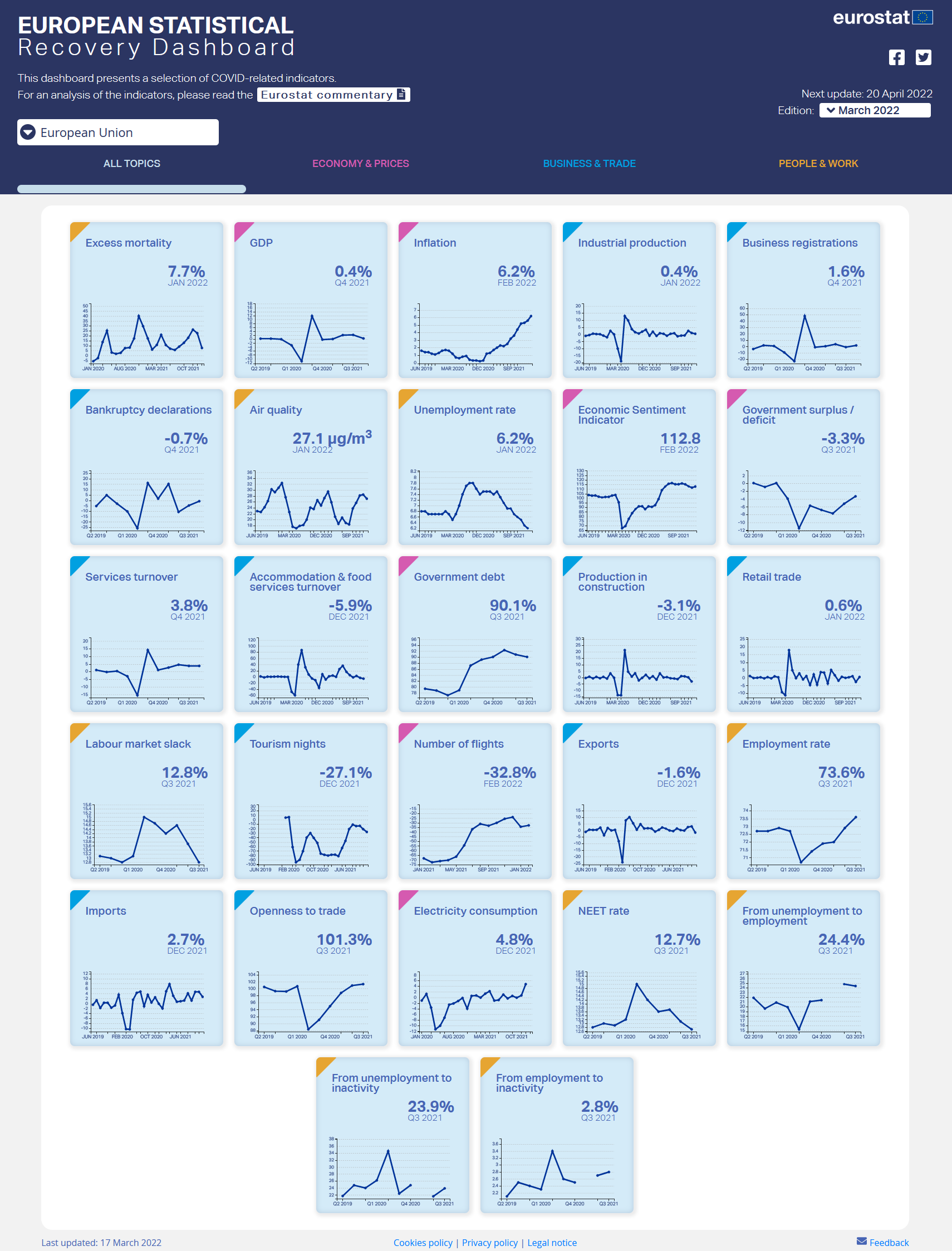Today, Eurostat released the March edition of the interactive European Statistical Recovery Dashboard.
The dashboard contains monthly and quarterly indicators from a number of statistical areas relevant for tracking the economic and social recovery from the COVID-19 pandemic, across countries and time.
March highlights: EU industrial production rises, while excess mortality declines, after GDP increases
- Following the EU economy’s expansion in Q4 2021, industrial production continued to rise and retail trade rebounded in January 2022.
- EU inflation surged to another record high level in February 2022 since the beginning of the time series in 1997. Inflation was largely driven upwards by energy prices, but there were also significant rises in other prices.
- EU economic sentiment rebounded in February 2022, increasing further above its pre-pandemic level. This increase was driven by mounting confidence in services, retail trade and, to a lesser extent, construction, while confidence stayed almost unchanged in industry and declined slightly among consumers. The results, however, are from the business and consumer surveys conducted before Russia’s military aggression against Ukraine.
- As regards the EU labour market and population, in January 2022 the unemployment rate dropped further below its pre-pandemic level and the excess mortality rate declined. Across Member States the excess mortality rate remained below 30%.
You can read the full analysis by clicking “Eurostat commentary” on the dashboard’s header. The dashboard is accessible here and is updated every month with the latest available data for each indicator.
The line charts in the dashboard offer many functionalities to easily explore and analyse the development of the indicators, such as displaying a longer time series, comparing several countries, downloading the customised chart or the source dataset.
For more information, you can also visit our website section dedicated to COVID-19, bringing together in one place a wide range of statistics and data published by Eurostat.
To contact us, please visit our User Support page.
For press queries, please contact our Media Support.

